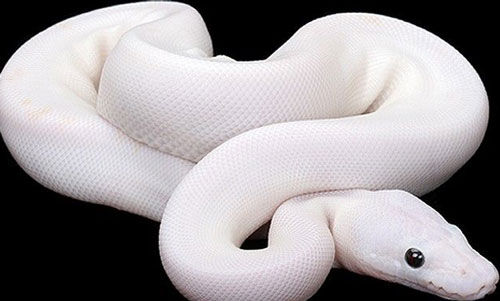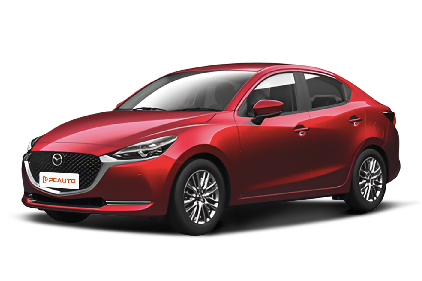Q
What are the dimensions of the Mazda 2 sedan?
The Mazda2 Sedan is a compact B-segment car that boasts moderate dimensions, making it well-suited for city driving and narrow roads in Malaysia. Its specific measurements include a length of 4,390mm, a width of 1,795mm, a height of 1,470mm, and a wheelbase of 2,570mm. While it is slightly shorter than rivals like the Honda City (4,553mm) and Toyota Vios (4,425mm), the wider track improves driving stability.
Inside, the front cabin offers ample headroom and legroom, while the rear legroom is relatively compact, making it ideal for medium-sized passengers. The trunk capacity is 440 liters, exceeding that of competitors like the Perodua Bezza, easily accommodating daily shopping or short trip luggage. Additionally, the flexible rear seating enhances its cargo capacity further.
Given the road conditions and parking environment in Malaysia, the Mazda2 strikes a commendable balance between maneuverability and practicality, making it an excellent option for urban commuting or small families.
Special Disclaimer: This content is published by users and does not represent the views or position of PCauto.
Related Q&A
Q
Does Mazda 2 have folding mirrors?
Yes, the Mazda2 Comes Standard with Power Folding Side Mirrors. This convenient feature allows you to easily fold the mirrors inward, which is especially useful for parking in tight spaces or navigating narrow roads, helping to protect the mirrors from potential damage.
In addition, the Mazda2 offers other mirror-related functionalities. Its side mirrors provide excellent visibility with no blind spots, and they have a small frontal area that reduces wind resistance. Furthermore, it is equipped with a mirror heating function, controlled by a switch located near the climate control panel, shared with the rear defroster. When activated, both the rear windshield and the exterior side mirrors will be heated for 15 minutes to eliminate fogging in rainy or snowy weather.
Q
Is the Mazda 2 the same as the Toyota Yaris?
The Mazda 2 is different from the Toyota Yaris. In terms of body structure, the Mazda 2 offers 4-door 5-seat sedan models, while the Yaris is typically a 5-door 5-seat hatchback. Their dimensions also vary, which affects interior space. For example, different models have different lengths, widths, heights, and wheelbases.
In terms of performance, although both may be equipped with petrol engines, their power output, torque, and fuel consumption differ. The Mazda 2 has its own unique engine tuning and performance characteristics.
Regarding features, each vehicle comes with its own set of standard and optional equipment, including safety features, infotainment systems, and comfort amenities. For instance, the headlight types, seat adjustment methods, and air-conditioning zoning may vary between the two models. Therefore, the Mazda 2 and Toyota Yaris are distinct vehicles with their own characteristics.
Q
How often should the Mazda2 be serviced?
The maintenance frequency for the Mazda2 depends on various factors. Generally speaking, under normal driving conditions, it is recommended to follow these guidelines. The first service is typically advised at around 5,000 kilometers or about 6 months of use, which helps to inspect vehicle components during the initial break-in period. After the first service, subsequent general maintenance intervals are usually every 10,000 kilometers or 12 months.
However, if you drive under harsh conditions, such as in dusty environments, frequent stop-and-go traffic, or short trips, you may need to service your vehicle more frequently. In this case, changing the oil and oil filter every 5,000 kilometers or every 3-6 months is a good practice. In dusty areas, the air filter may need to be cleaned every 10,000 kilometers or 6 months, while it should be replaced every 20,000 kilometers or 24 months under normal conditions. Brake fluid should be regularly checked and replaced every 2-4 years, depending on usage.
Regular maintenance not only ensures that your Mazda2 runs smoothly but also extends its lifespan and enhances safety.
Q
Is Mazda 2 economical?
The Mazda2 is considered a relatively economical model. It is equipped with a 1.5L naturally aspirated engine, with an official combined fuel consumption of 5.3L/100km. This level of fuel efficiency is commendable among its peers, helping owners save on fuel costs. Additionally, the vehicle comes with a warranty of 5 years or 100,000 kilometers, providing a longer coverage period that can help mitigate potential high repair expenses in the future.
In terms of pricing, taking the 2023 Mazda 2 Sedan 1.5L as an example, it is priced between RM97,000 and RM107,000 (depending on the variant), making it competitively priced in its segment. The interior features are quite practical, with standard equipment such as automatic parking assist and engine start-stop technology, which not only facilitates driving but also aids in fuel saving. While it may not be the most powerful in terms of performance, considering fuel efficiency, warranty, price, and other factors, the Mazda2 demonstrates solid value in terms of economy, making it an ideal choice for consumers seeking a budget-friendly and practical vehicle.
Q
Is the Mazda 2 a family car?
The Mazda2 can be seen as a family vehicle. It features a 5-seat layout, making it suitable for the daily travel needs of small families. While the interior space isn't particularly large, it provides sufficient room for passengers, and the rear seats come with a 60:40 split-folding function, allowing for increased cargo space when needed for items like strollers or groceries.
In terms of safety, it comes standard with features such as ABS, electronic stability control, at least two airbags, and ISOFIX child seat anchors, which are all crucial for a family car. Fuel efficiency is also a significant highlight, with an official combined consumption of 5.3 liters per 100 kilometers, helping to lower everyday travel costs. Additionally, it boasts convenient features like keyless entry, automatic climate control, and a touchscreen infotainment system, enhancing overall comfort for family journeys.
Q
Does Mazda 2 have reversing camera?
Yes, the Mazda 2 is equipped with a reversing camera. All listed Mazda 2 models feature a "parking image system: front and rear cameras," indicating they come with both front and rear cameras, including a reversing camera. This feature is highly practical as it provides drivers with a clear view of the area behind the vehicle when reversing. It enhances safety by minimizing blind spots and making it easier to avoid collisions with obstacles, pedestrians, or other vehicles. Additionally, the inclusion of this feature increases parking convenience in various scenarios, whether in tight parking spaces or on busy streets.
Q
Is Mazda 2 a sport car?
The Mazda 2 is not a traditional sports car in the strict sense, but it does possess some sporty characteristics. Its engine delivers relatively smooth and linear power output. For instance, the equipped 1.5L naturally aspirated engine produces a maximum horsepower of 114PS and provides responsive power delivery as the revs climb. Regarding the suspension system, the tuning of the front MacPherson strut and rear torsion beam independent suspension ensures daily driving comfort while maintaining adequate cornering support to reduce body roll. Externally, it inherits the family's "Kodo" design style, featuring a shield-shaped front grille integrated with sleek headlights, flowing side profiles, and a compact yet refined rear end that conveys athleticism. However, sports cars typically prioritize high-performance engines, lightweight construction, and robust power output. The Mazda 2 primarily targets the mainstream consumer market, emphasizing overall practicality, fuel efficiency, and comfort rather than being designed as a dedicated sports car focused on extreme speed or track performance.
Q
Does the Mazda 2 have a touch screen?
The latest Malaysian version of the Mazda2 (2024) is not equipped with a traditional touchscreen. Instead, it features a 7-inch non-touch central display, which operates through the Mazda Connect infotainment system using a rotary knob and buttons on the center console. This design aims to reduce driver distraction and enhance safety.
Although it doesn't support touch input, the system is compatible with Apple CarPlay and Android Auto (via wired connection), allowing users to easily access navigation, music, and other smartphone features. Mazda adheres to a "driver-oriented" design philosophy, ensuring that even the entry-level Mazda2 does not compromise on the logic of operation. While users who heavily rely on touch controls may need a brief adjustment period, the precision and smoothness of the rotary control prove to be very practical in Malaysia's driving conditions.
Q
Does the Mazda2 perform well on the highway?
The Mazda 2 performs well on the highway. It is equipped with a 1.5L naturally aspirated engine, paired with a 6-speed automatic transmission, delivering 114 horsepower and 149 Nm of torque, which meets normal acceleration and overtaking demands on the highway. In terms of handling, Mazda's precise steering system stands out as a key advantage. At high speeds, drivers can accurately control the vehicle's direction. Its well-tuned suspension system effectively absorbs road imperfections and minimizes body roll, ensuring a stable driving experience. For safety, standard features include ABS anti-lock braking and vehicle stability control, providing added security during highway driving. The cabin also offers amenities like a HUD head-up display and a multifunction steering wheel, enhancing driving convenience. However, Mazda vehicles typically have room for improvement in noise insulation at high speeds since the Mazda 2's wind and road noise may be somewhat noticeable on the highway.
Q
What engine is a Mazda 2 equipped with ?
The Mazda 2 is equipped with a 1.5L naturally aspirated engine with an NA intake system, an inline (L) cylinder configuration, and four cylinders. This engine delivers a maximum horsepower of 114PS, with peak power output at 6000rpm and maximum torque of 149N·m at 4000rpm.
The engine provides stable power output to meet daily driving demands. It incorporates multiple advanced technologies, such as an automatic start-stop system that shuts off the engine during brief stops and restarts when moving off, helping to save fuel and reduce emissions. The hill-start assist function prevents rollback when starting on inclines, enhancing driving safety. Additionally, the engine is paired with an AT transmission for smooth gear shifts and improved driving comfort.
Popular Cars
Model Year
Car Compare
Car Photo
Latest Q&A
Q
How much did a new 2018 beetle cost?
The 2018 Volkswagen Beetle had a starting price range of approximately RM120,000 to RM180,000, depending on the trim and options. The entry-level 1.2 TSI Design model was the most affordable, while the top-spec 2.0 TSI R-Line version approached RM180,000—though final pricing could vary with optional extras and dealer promotions.
As a timeless classic, the 2018 Beetle kept its retro charm but packed modern tech like a touchscreen infotainment system and active safety features. Under the hood, buyers could choose between the fuel-efficient 1.2T or the more spirited 2.0T engine.
Fair warning: Volkswagen discontinued the Beetle in 2019, so you’ll only find it on the used market now. That said, its iconic design and nostalgic appeal still make it a hit among collectors. If you’re eyeing a pre-owned model, always check the vehicle history and maintenance records to snag a solid deal.
Q
What engine does a 2018 VW Beetle have?
The 2018 Volkswagen Beetle offered two gasoline engine options across different markets. The primary powerplant was a 1.2-liter TSI turbocharged inline-four, delivering 105 horsepower and 175 Nm of torque, paired with a 7-speed DSG dual-clutch transmission. This compact forced-induction engine struck a balance between urban fuel efficiency and strong low-end torque.
Higher-spec variants featured an optional 1.4-liter TSI turbocharged unit, bumping output to 150 horsepower. Both engines adopted direct fuel injection and belonged to VW’s widely used EA211 modular family, featuring modern tech like lightweight aluminum blocks.
Though retaining its iconic silhouette, this generation Beetle actually shared its underpinnings with the Golf, inheriting the brand’s proven front-wheel-drive architecture. This platform commonality also translated to easier maintenance, as local dealerships were well-versed in servicing these powertrains thanks to extensive parts sharing across VW’s lineup.
Q
What are the different models of the 2018 VW Beetle?
The 2018 Volkswagen Beetle comes in three main trims: Classic, Trendline, and Sport. All models are powered by a 1.2-liter TSI turbocharged engine delivering 105 horsepower, paired with a 7-speed DSG dual-clutch transmission—perfect for city driving with its nimble handling and solid fuel efficiency.
The entry-level Classic trim rolls on 16-inch wheels and features a basic multimedia system. Stepping up to the Trendline adds 17-inch wheels, fog lights, and chrome accents. The Sport trim leans into its name with 18-inch wheels, a sport-tuned suspension, and unique interior color options.
This generation keeps the Beetle’s iconic retro curves but modernizes them with touches like LED daytime running lights. Inside, you’ll find color-matched dash panels, and with 310 liters of trunk space, it’s more practical than most small cars in its class.
Since the Beetline was discontinued in 2019, the 2018 model stands as the last new generation, making it a rising collector’s item—especially the convertible, which holds strong appeal in the used market. For maintenance, stick to routine service every 15,000 km or 12 months, and regular 95-octane fuel is all it needs.
Q
Does the 2018 Beetle have Apple CarPlay?
The 2018 Volkswagen Beetle did come equipped with Apple CarPlay, integrated into its Composition Media infotainment system. This allowed iPhone users to seamlessly connect for navigation, music, and other apps. The system also supported Android Auto, catering to different smartphone users with its intuitive and responsive interface—definitely a plus for convenience on the road.
That said, some early-production 2018 models might require a software update to activate the feature, so it’s worth checking with an official dealer to confirm your car’s specs or available upgrades. Also, wireless Apple CarPlay wasn’t standard across all trims; it depended on the factory-installed options.
For fans of classic styling who still want modern tech, the Beetle struck a nice balance between retro charm and everyday usability. Competitors like the Mini Cooper offered similar connectivity, but let’s be honest—the Beetle’s iconic design was always its standout feature.
Q
What is the fuel economy of the 2018 Beetle?
The 2018 Volkswagen Beetle's fuel efficiency varies by powertrain. The 1.2L TSI turbocharged version delivers a combined fuel consumption of around 5.5L/100km, while the 1.4L TSI model is slightly thirstier at approximately 6.0L/100km – both perform best with 95-octane petrol.
You'll likely see higher consumption in city driving, but it cruises efficiently on highways thanks to its classic aerodynamic design. For better mileage, stick to routine maintenance like cleaning the air filter and keeping tyres properly inflated. These small habits can help squeeze out extra kilometres per litre.
Though discontinued, the 2018 Beetle remains popular in the used car market – its iconic styling and decent fuel economy make it a practical daily driver. Just remember real-world figures depend heavily on driving style and road conditions, so check owner forums for real-life feedback.
View MoreRelated News

At the same price of RM 108,670, Mazda 2 Sedan vs Hatchback, which one is more suitable for you?
WilliamSep 3, 2024

Rumor: Toyota and Mazda collaborate to develop the next-generation MX-5 and GR86
AshleySep 30, 2025

MAZDA EZ-60 will be launched in China, and will be available in other global markets in 2026
RobertSep 30, 2025

CX-80 too large? Too expensive? Mazda also offers you the CX-60
WilliamSep 4, 2025

Mazda Malaysia Launches its Largest SUV, the CX-80, with a Price of RM331,610
Kevin WongSep 4, 2025
View More

















Pros
Cons